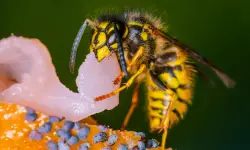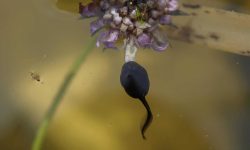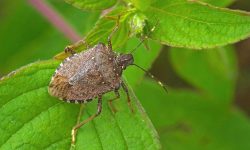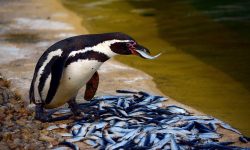Rolly pollies, also known as pill bugs or woodlice, are some of the most interesting little creatures in your garden. These tiny, gray crustaceans are famous for their ability to roll into a ball when threatened, a behavior that gives them their adorable name. Despite their insect-like appearance, they’re actually more closely related to shrimp and crabs than to bugs.
What makes rolly pollies so fascinating is their role in the ecosystem. They’re nature’s recyclers, feeding on decaying organic matter and returning nutrients to the soil. Without them, gardens and forests would struggle to break down fallen leaves and dead plants efficiently.
Learning what rolly pollies eat helps gardeners understand how to support healthy soil and balanced environments. Their diet not only keeps them thriving but also plays a vital part in sustaining plant life around them.
Understanding the Rolly Polly Diet
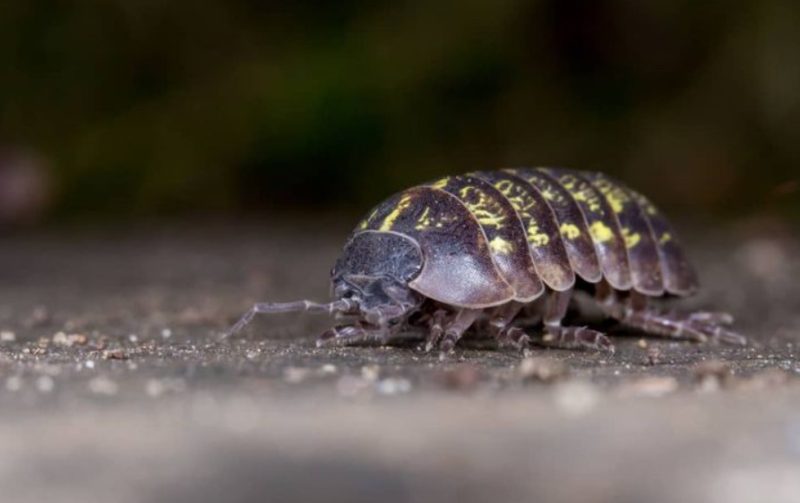
The Role of a Decomposer
Rolly pollies are decomposers — organisms that consume and break down dead organic matter. Unlike insects that feed on live plants, rolly pollies prefer decaying materials rich in moisture and nutrients. By feeding on decomposing leaves, wood, and roots, they help recycle organic matter into fertile soil.
This natural cleanup process keeps gardens healthy by improving soil texture, reducing waste buildup, and maintaining nutrient circulation. Essentially, rolly pollies act as tiny gardeners working quietly underground.
Nutrition and Feeding Habits
Rolly pollies get most of their nutrition from decayed plant matter that’s soft and easy to chew. Their digestive systems are adapted to extract minerals and nutrients from partially decomposed materials that contain beneficial bacteria and fungi. They also eat algae, fungi, and the occasional animal remains when available.
Moisture plays a key role in their feeding. Since they breathe through gill-like structures, they require damp environments to survive and digest food effectively. Without enough humidity, they can dehydrate quickly and stop feeding.
Environmental Importance
By eating decaying matter, rolly pollies help convert waste into nutrient-rich soil that supports plant roots. Their presence is a sign of healthy soil biology. They also help reduce harmful mold and bacteria that could otherwise overwhelm decomposing material.
Rolly pollies are harmless to gardens when populations are balanced. They only become pests if conditions are extremely moist and food is scarce, at which point they may nibble on tender seedlings.
20 Foods Rolly Pollies Love the Most
1. Decaying Leaves
Fallen leaves are the primary food source for rolly pollies. As leaves decompose, they soften and become rich in fungi and microorganisms, which provide nutrients.
Rolly pollies chew through this material, breaking it down further and returning carbon and nitrogen to the soil.
A healthy layer of leaf litter ensures that these creatures stay fed and active, maintaining soil fertility year-round.
2. Rotting Wood
Decaying wood is another favorite food for rolly pollies. They feed on rotted logs, branches, and bark that are soft and moist.
Wood provides cellulose and trace minerals essential to their diet. As they consume it, they contribute to the slow recycling of nutrients into the ground.
Old logs and mulch piles are excellent habitats for rolly pollies, offering both shelter and food.
3. Dead Plant Matter
Rolly pollies consume all sorts of dead plant material, from wilted flowers to dried stems and roots.
This helps keep the garden tidy and prevents the buildup of decaying organic debris that could attract pests.
By recycling this matter, they accelerate natural composting and improve soil aeration.
4. Fungi and Mold
Fungi and mold are essential parts of a rolly polly’s diet. These microorganisms grow naturally on decaying wood and leaves, providing easy-to-digest nutrients.
Rolly pollies graze on these growths, helping balance microbial activity in the soil.
Their feeding prevents excessive mold buildup, keeping the decomposing process balanced.
5. Algae
Algae form on damp soil, rocks, or rotting logs, making a nutritious snack for rolly pollies.
It contains minerals and small amounts of protein, helping them maintain energy and hydration.
Algae-rich areas often attract dense populations of these tiny crustaceans, especially in shaded, moist environments.
6. Moss
Moss provides both food and moisture for rolly pollies. They nibble on dead or decaying moss rather than live, healthy patches.
This food source supports their digestive bacteria and keeps their bodies hydrated.
Mossy garden corners often host thriving colonies of these creatures, especially during rainy seasons.
7. Dead Insects
Although primarily plant-eaters, rolly pollies occasionally feed on dead insects. The decaying protein offers valuable nutrients like nitrogen and calcium.
They usually eat soft-bodied remains that are already partially decomposed.
This behavior helps reduce waste in their habitat and contributes to nutrient recycling.
8. Fruits
Overripe or fallen fruits such as apples, berries, or bananas attract rolly pollies. These fruits are soft, sweet, and rich in natural sugars and moisture.
They consume fruit pulp as it breaks down, aiding in composting processes.
While beneficial in compost piles, excessive fruit can lead to overpopulation if not managed.
9. Vegetables
Rotting vegetable scraps — like lettuce, cucumber, and squash — are favorite foods in moist compost bins.
They offer hydration, fiber, and trace minerals while encouraging healthy decomposition.
Gardeners often spot rolly pollies feeding around compost heaps where decayed vegetables accumulate.
10. Grass Clippings
When grass clippings are left to decompose, they become a perfect food source. The decaying material stays moist and soft, ideal for rolly pollies.
They feed on these clippings as they ferment, helping transform yard waste into rich compost.
This process also releases beneficial nutrients like nitrogen back into the soil.
11. Paper and Cardboard
Rolly pollies can eat decomposing paper or cardboard, especially when damp. The cellulose fibers mimic natural plant material.
They prefer small, moist pieces that have begun to break down.
While not a main food, it helps supplement their diet in composting environments.
12. Tree Bark
Old, decayed bark provides texture, shelter, and nutrition. Rolly pollies feed on softened bark layers that contain fungi and algae.
Bark offers a natural balance of moisture and minerals, ideal for sustaining them through dry periods.
Leaving bark mulch in gardens encourages rolly pollies to stay active and recycle nutrients.
13. Compost
Compost piles are a rolly polly paradise. They’re filled with decomposing plant material, fruits, and vegetables that provide continuous food.
Rolly pollies play an important role in breaking down compost faster, turning waste into usable soil.
They also improve compost aeration by tunneling through it.
14. Roots
Dead or decaying roots are another important food source. They contain fibrous plant matter and nutrients left behind after plant death.
By eating these roots, rolly pollies help clear old growth and prepare soil for new plants.
Their root-feeding habits improve soil health and structure.
15. Eggshells
Although unusual, rolly pollies will consume finely crushed eggshells mixed into compost. These provide calcium, which strengthens their exoskeletons.
They typically feed on shells that are softening through decomposition.
This calcium recycling benefits the overall soil nutrient balance as well.
16. Animal Waste
Rolly pollies sometimes eat animal droppings, particularly from herbivores. These droppings are rich in partially digested plant material and microbes.
By consuming them, rolly pollies help sanitize the soil and recycle nutrients quickly.
This natural process supports a cleaner, more balanced ecosystem.
17. Flower Petals
Fallen flower petals are soft and nutrient-rich as they decay. Rolly pollies eat them when they begin to wilt and lose structure.
Petals contain trace sugars, vitamins, and minerals that support healthy metabolism.
This food source also contributes to colorful compost material.
18. Seedlings (Occasionally)
When other food is scarce, rolly pollies may nibble on tender seedlings. This behavior is rare and usually temporary.
They prefer decaying material, but high humidity and low food availability can lead them to feed on live plants.
Balanced conditions in the garden prevent this from becoming a problem.
19. Fallen Tree Fruit
Fruit that drops from trees and begins to rot is irresistible to rolly pollies. It’s full of sugar and soft plant fibers.
They gather beneath the fruit to feed, aiding in decomposition and seed release.
In orchards, they help clean up fallen produce naturally.
20. Soil and Organic Debris
Rolly pollies sometimes ingest soil while feeding on decaying material. This helps them process nutrients and maintain gut health.
Soil particles also aid digestion by grinding down food inside their stomachs.
Their constant feeding and burrowing enrich the soil’s organic composition, promoting long-term fertility.
FAQs About What Rolly Pollies Eat
Do Rolly Pollies Eat Live Plants?
Usually no. They prefer dead or decaying matter. Only when food is scarce might they nibble on soft seedlings.
Are Rolly Pollies Good for Gardens?
Yes! They help decompose organic material, improving soil quality and nutrient recycling naturally.
Can Rolly Pollies Eat Fruit and Vegetables?
Absolutely. They love soft, overripe fruits and decayed vegetables found in compost heaps.
Do Rolly Pollies Eat Meat?
Occasionally, they consume decaying animal remains or insects for protein, but they’re mainly herbivores.
What Attracts Rolly Pollies to My Yard?
Moisture, decaying plant matter, and shaded areas. These provide both food and shelter.
Are Rolly Pollies Dangerous to Plants?
Not usually. They only harm plants if overpopulated or when the soil stays excessively wet.
Can I Feed Rolly Pollies at Home?
Yes, if you keep them for study or composting. Offer leaf litter, vegetable scraps, and moist wood pieces.
How Do Rolly Pollies Help Soil?
Their feeding breaks down organic matter, aerates soil, and boosts microbial activity for healthier plant roots.
Do Rolly Pollies Drink Water?
They don’t drink directly. Instead, they absorb moisture through their gills from humid environments.
What Should I Avoid Feeding Them?
Avoid chemicals, fresh green plants, or processed foods. These can harm their delicate systems and soil microbes.
Final Thoughts
Rolly pollies may be small, but their role in nature is massive. These humble decomposers transform waste into fertile soil, making them vital to any healthy garden or ecosystem. Their diverse diet — from leaves and wood to fungi and fruits — keeps them thriving and supports the environment around them.
Understanding what rolly pollies eat helps us appreciate their importance as natural recyclers. By maintaining healthy soil and organic balance, they quietly sustain the cycle of life beneath our feet every single day.

